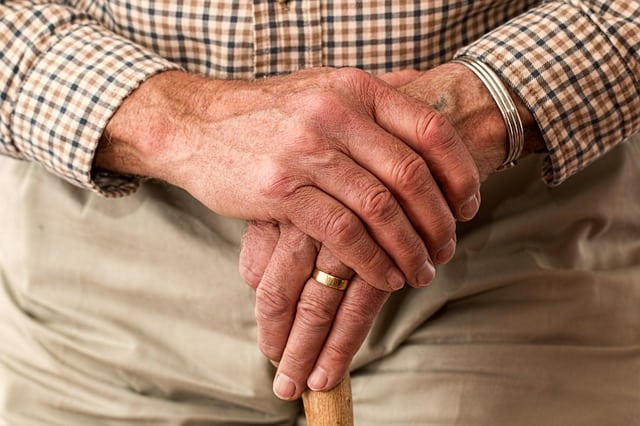Scientists have developed a method to find a correlation between everyday movements and the risk of developing pathological conditions long before the onset of symptoms. Fluctuations in movement patterns have been found to increase the risk of senile weakness and infirmity, as well as the risk of death from all causes, according to Science Translational Medicine. The method also revealed a correlation between movement fluctuations and the risk of death from all causes. As the researchers of the study found, on average in elderly people with a large number of fluctuations of movement, senile weakness and weakness appear after 4.7 and 3-4.2 years, respectively, and these people die on average after 5.8 years.
Thanks to the emergence of new wearable devices, physicians in recent years have the opportunity to track many physiological parameters for a long time without disturbing people. Including so follow the motor activity of people. In parallel with the development of wearable devices, new scientific disciplines developed. In particular, fractal physiology has appeared, which studies the interaction with each other of physiological processes in the human body.
Fractals are called objects whose parts are similar in shape to the whole object. In wildlife, fractal-like structures are corals or starfish; in humans, these include the blood vessel system or bronchial tree.
Physiological processes can also be similar to fractals. For example, heart rate or movements consist of patterns that are periodically repeated and parts of which are similar to the whole: they have a similar structure, temporal and statistical characteristics. The properties of movement patterns in the same person are preserved when he is healthy, and change with prolonged deviations from the norm. For example, they remain in healthy young people even if they are actively involved in sports or do nothing. But with age or the appearance of pathological conditions, patterns of movements change and a lot of fluctuations appear in them.
Researchers believe that ordering patterns is an indicator of the body’s ability to adapt to surrounding conditions. And as Peng Li of the Brigham and Women’s Hospital and his colleagues showed, a change in movement patterns allows us to predict the risk of developing Alzheimer’s. But the relationship of fractal patterns of movement with other pathological conditions is still poorly understood. Therefore, in the new work, American doctors decided to find out whether the change in their properties can predict senile weakness and death from all causes.
To test this, scientists selected 1275 people from the Rush Memory and Aging Project. The average age of the participants at the time of the experiment was 81 years old, 76 per cent of them were women. The researchers put on participants similar to wristwatches devices for Actimetrics and recorded their activity for 10 days. All this happened in 2005. And then the researchers observed the participants for 13 years, until 2018. The authors analyzed the properties of movement patterns and with the help of Cox’s regression calculated their relationship with the risk of developing senile weakness, infirmity (inability to engage day-to-day affairs) and death from all causes.
The results showed that those participants whose patterns of movement were more chaotic, with more random emissions, risked developing senile weakness, senile infirmities and deaths from all causes increased by 31 per cent, by 15-25 and by 26 per cent (in all cases P <0.0001), respectively. It also turned out that, on average, senile weakness appeared in the study participants 4.7 years after the start of the experiment, senile weakness – after 3-4.2 years, and, on average, five and a half years later, they were dying.
According to the authors of the study, their results show that tracking everyday movements can be observed for the health of the elderly. This is a fairly cheap and non-irritating human way that does not require much effort either from him or from the researcher. It is possible that in the future the method can be used for long-term monitoring of the elderly at home.
Scientists note that the study has limitations. Data on the current state of health were reported by the participants themselves, which may reduce the validity of the results. Many parameters have yet to be analysed, in particular how fluctuations correlate with falls, fractures and hospitalization of the elderly.
Recently, U.S. doctors analyzed the daily activity of more than 500 elderly people and found that the increased risk of death does not correlate with their total activity time. It is affected by the number of respites and the duration of periods of activity.
